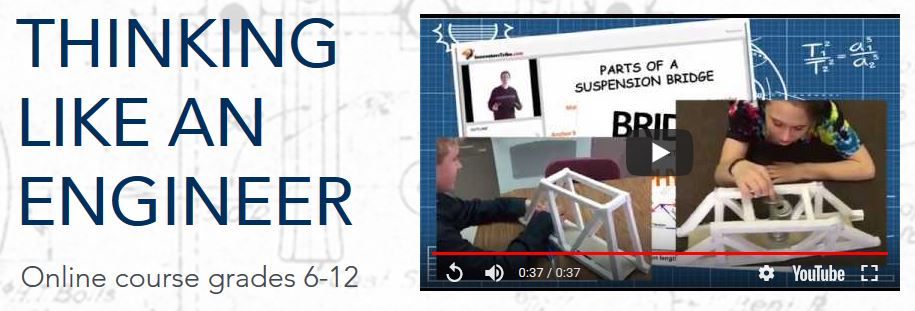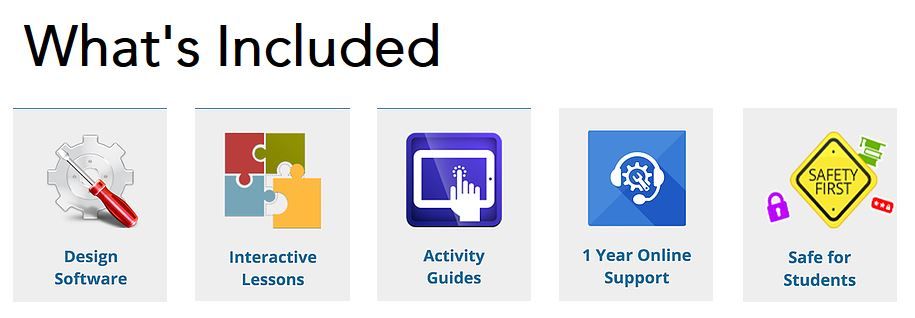
· I can explain and apply the 6 steps of problem-solving.
· I know how to use techniques like the 5 Why’s problem identity technique and the “What if” technique.
· I can explain what an idea is and how to have more of them.
· I can explain the real definition of the word “solution.”
· I can demonstrate the use of different brain-games to help build my innovative muscle.
· I can identify the 4 poisons to innovation and their cure.
· I can explain the importance of engineering and problem-solving using real-world examples.
· I can explain that there are 14 grand problem-solving challenges that need solutions.
· I can define the following terms: tension, compression, twisting, bending, shearing, torsion, vortices, vortex shedding, aerodynamics, dead load, live load, structural-engineering, girder, truss, friction, potential and kinetic energies, g-force.
· I can give an example of how each of these math subjects is used in engineering: Algebra, Geometry, Calculus, Advanced Calculus, Trigonometry, Probability & Statistics, Physics.
· I can demonstrate the correct use of the following tools: ruler, construction level, 3D design software

He was a little unenthused about the course throughout the first chapter, because he felt like he hadn't actually been taught anything. And then, the next chapter was about 3D modeling, and he's not a big computer guy, so he was kind of dreading that too. . .BUT as he began that chapter, he found that, "Hey! It's kind of interesting!" :)
So yes, there is a 3D modeling segment of the course, and it's a free download of a CAD Autodesk product. Awesome, right? :) This is something that I believe all children of this generation will need to have at least some exposure and experience with, so I'm happy that it is a part of this course as well. The explanations are very clear, even as to how to download the product and install it (which was nice, because he could do it himself.) He has been enjoying these lessons, and has been doing a lot of playing around with this software.
And, yes, I used the term "playing around," because that's how I term it with him. . .but truthfully he's familiarizing himself with the tool and gaining confidence in this computer modeling. I think this is very valuable, so I've been encouraging him to do more and more of that "playing around" before he proceeds much further.
SO, I've told you about the intro and the 3D modeling, but you'd probably like to know the other topics, right? The other chapter titles are Engineering Rollercoasters, Engineering Bridges, Nano Engineering, and Thinking Like an Engineer (course conclusion).
He's enjoying it, and I think I'll have my 13 year old daughter take the course after him. Of course she'll have seen his solutions to the challenges, and I'd bet she'll probably try to come up with her own unique solutions. It's not a course just geared toward high schoolers, it's actually listed for grades 6-12.
 |
| This screenshot shows the video lecture, the chapater/progress section (on the left) and the 3D program behind |
I do like this course. I think it is very valuable to most students, not just those interested in a engineering career, remember it is learning to think like an INNOVATOR, and that is definitely something we should want all the members of the next generation to be proficient in. I would suggest this course as an addition to your homeschool curriculum.

If you have a high schooler, or if you are in transcript-credit mode, you'll be interested in the estimate that this is around 30 hours of work, and will work out to about 1/4 of a credit.
So, to sum up, this is a great hands-on, online learning tool to help your student develop his or her innovative thinking skills (as well as 3D modeling!). Go check out their site (Thinking Like an Engineer) . While you are there, you might see that there is another course which I have not viewed yet, called Thinking Like an Architect, which looks really neat too! To read reviews by other folks of this engineering course as well as of the architect course, please click on the link below.





No comments:
Post a Comment